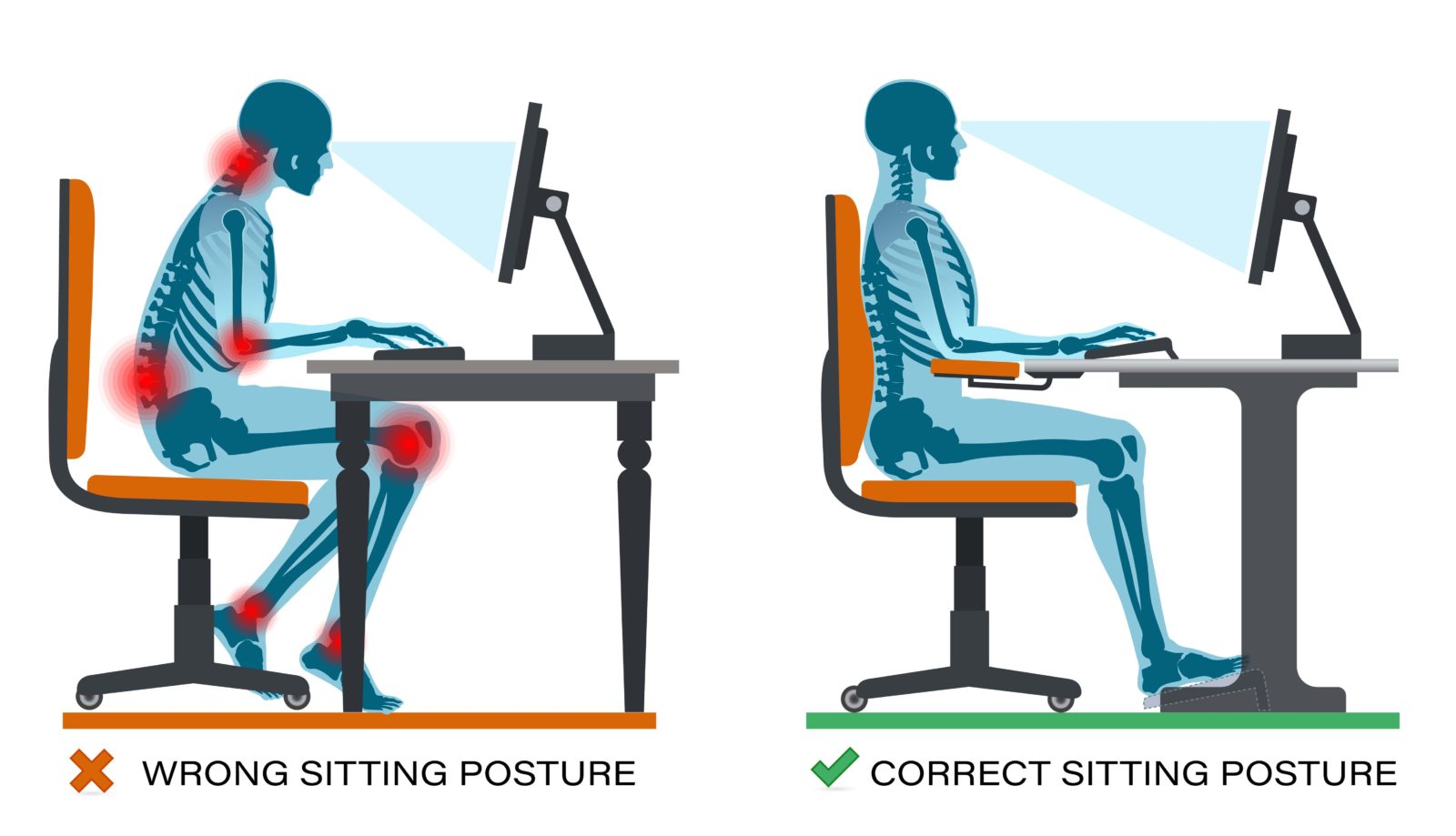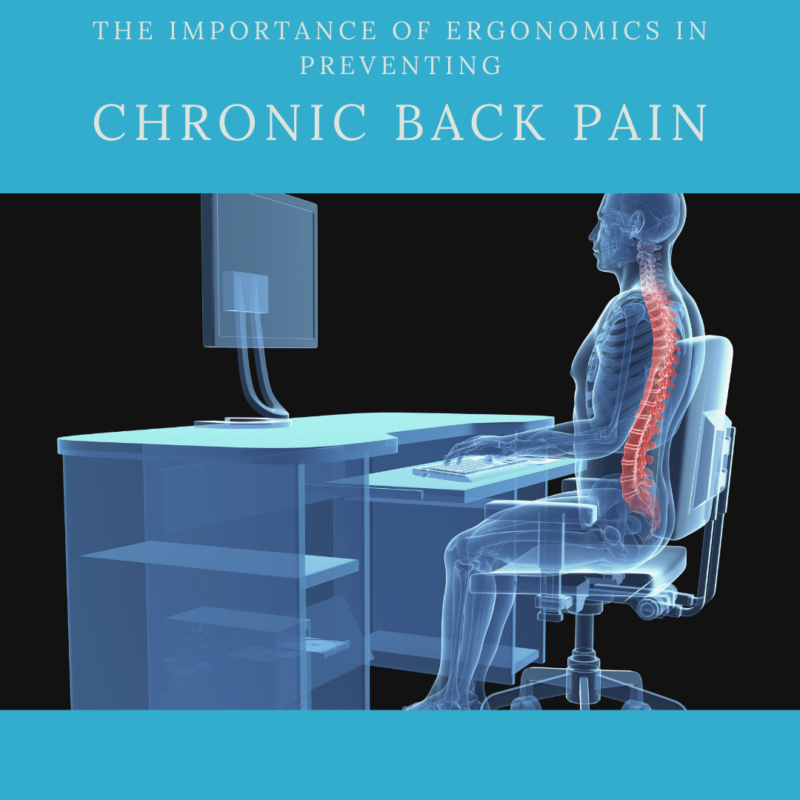Your spine is influenced by everything you do. This is especially important when it comes to what type of work you do and how you do it. Considering the average adult spends about 40 hours per week working, this is a significant amount of time that your spine is exposed to certain conditions. Therefore, favorable conditions can help prevent or decrease chronic back pain, while unfavorable conditions can cause or worsen back pain.

Ergonomics is the study of how efficient one is in their workplace environment with an emphasis on modifying the work environment to fit the worker and eliminate discomfort or risk of injury. Paying close attention to how you work and then taking measures to eliminate discomfort doesn’t just make your work day more enjoyable, but it also prevents back pain caused by chronic muscle tension as a result of poor posture.
However, ergonomics deals with more than simply good posture. While posture is definitely an important factor of ergonomics, there are other factors that are also important. For example, it’s not only how you are sitting, but what you are sitting on. Additionally, the way you position your equipment around you is also important. Ultimately, ergonomics is a number of factors that work together to make your workday routine more efficient and less likely to cause discomfort.
If you suffer from chronic back pain, then proper ergonomics are pretty much a necessity. Once you have started to make ergonomic adjustments, it is very likely that you will notice an improvement in your pain levels. At the very least, proper ergonomics should prevent your pain from getting worse. Here are some easy ways to improve your workplace ergonomics:
Keep Arms Parallel to the Spine
While working at a desk, you should arrange everything so that your arms are always parallel to your spine and your elbows are at a 90 degree angle. In order to get your elbows at the proper angle, you may need to adjust the height of your chair. It may also be beneficial to buy a chair with adjustable armrests so that you can set the position of the armrests. This position naturally reduces the amount of stress placed on your shoulders and upper back.
Keep Your Feet on the Floor
Your seat should be at a height where you can keep both feet on the floor while bending your knees at a 90 degree angle. However, this is not always possible due to your height or the height of your chair and/or desk. In these cases, it is recommended to purchase a foot stool to plant your feet on. When your feet are properly supported instead of loosely hanging all day, this takes off additional strain on your legs and feet, as well as your lower back.

Your Desk Should Match Your Height
What this means is that your work surface should be set high enough to allow you to sit properly with elbows and knees at 90 degree angles, as well as a straight spine. If you are unable to do so, or if you find yourself hunching over to work, then this is an indication that your desk height needs to be adjusted. Unfortunately, hunching over your desk for 8 hours a day can cause some pretty serious discomfort, so it is important to make the necessary adjustments as soon as possible.
Take Breaks
Taking a few seconds every 15-30 minutes to get up and out of your office chair is another great way to reduce back pain. This is because stretching or even changing positions from sitting to standing reduces pain, stiffness, and muscle fatigue.










